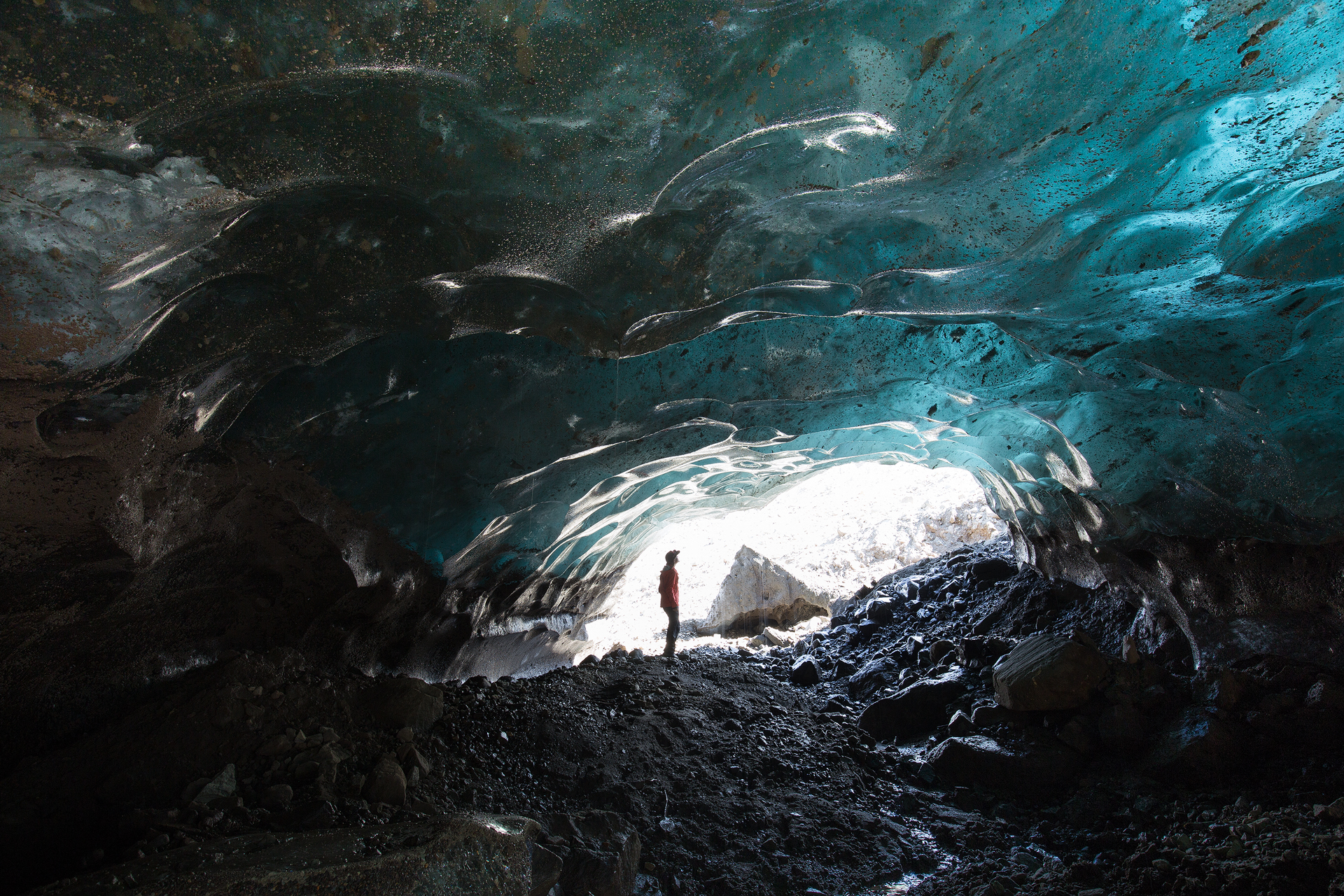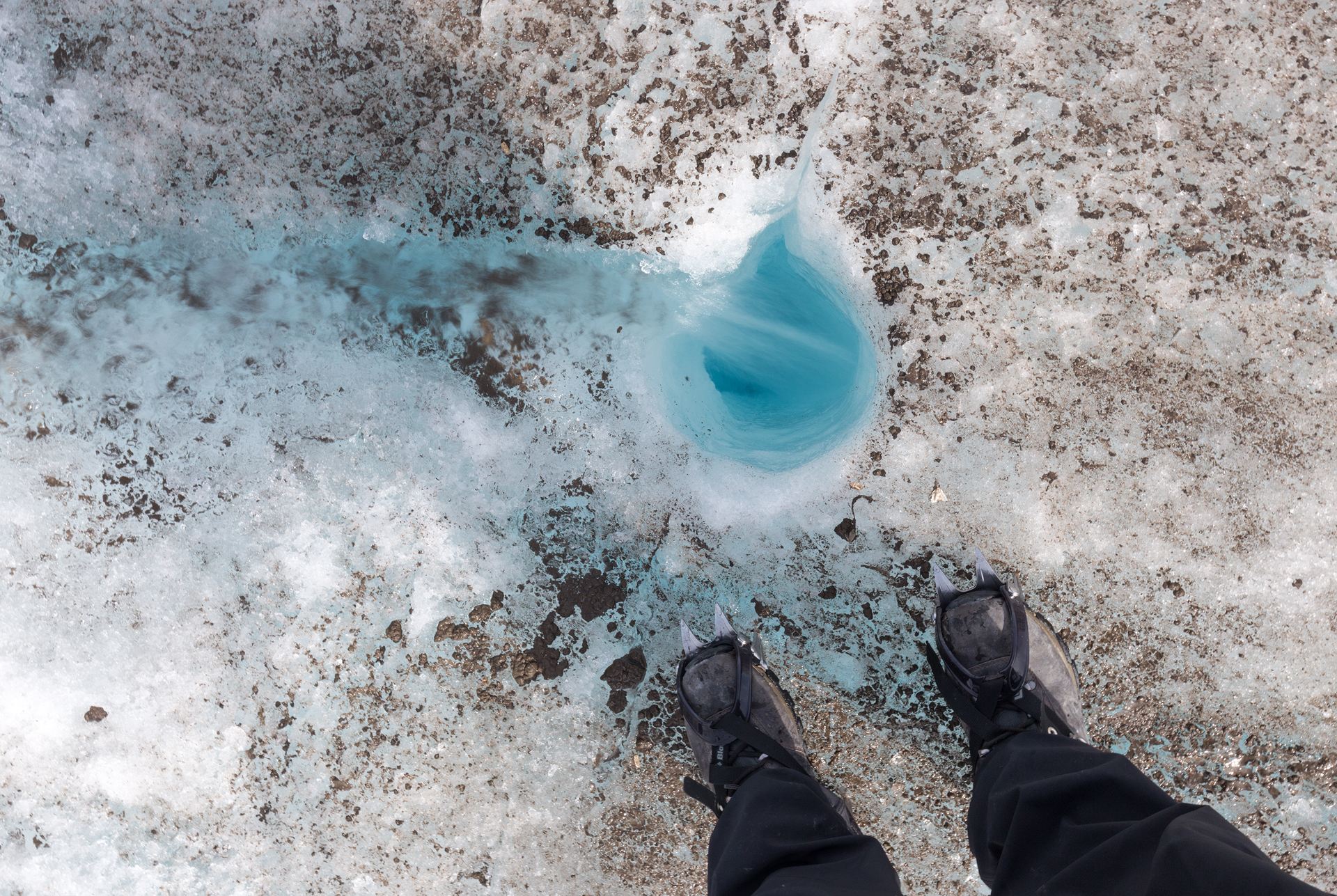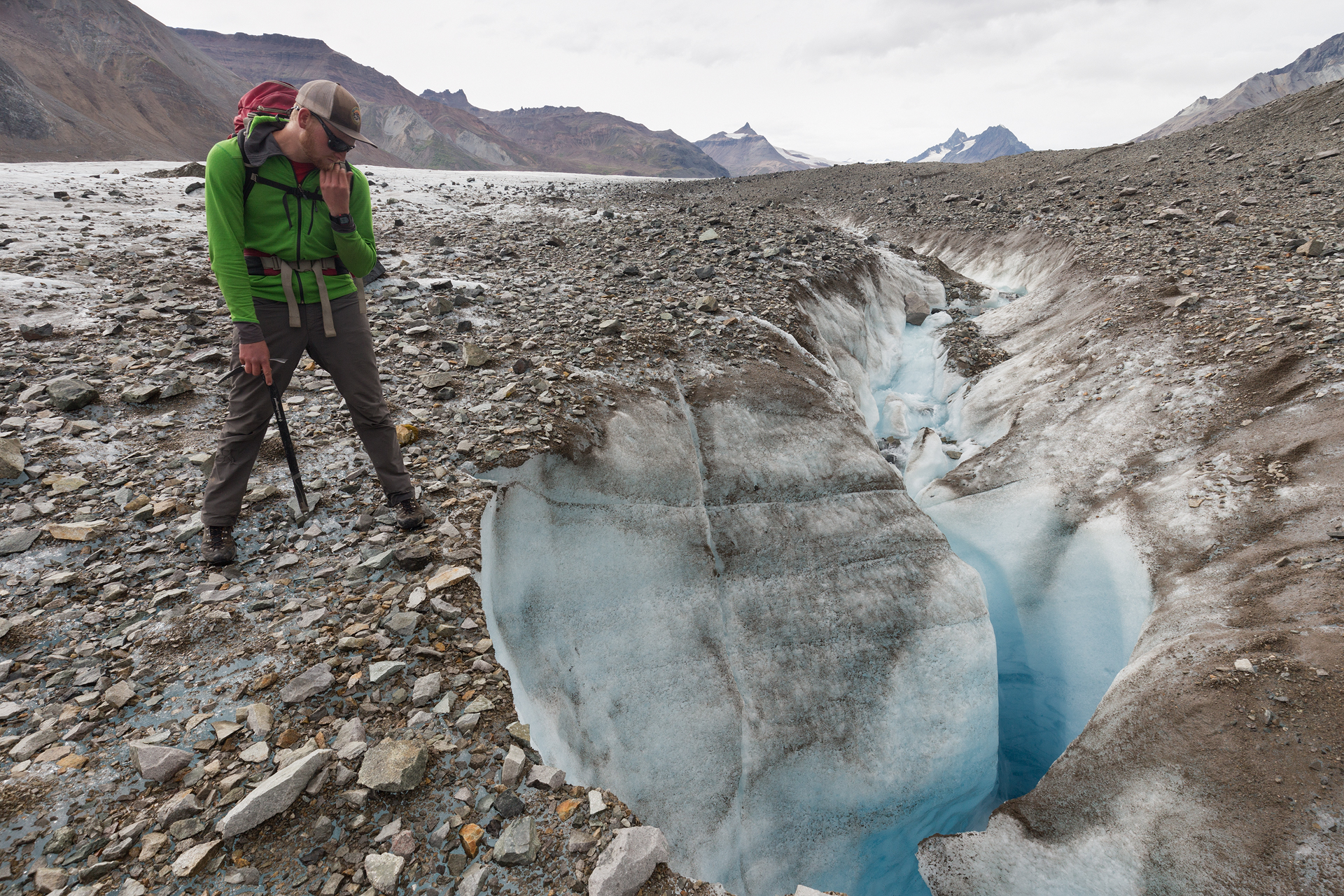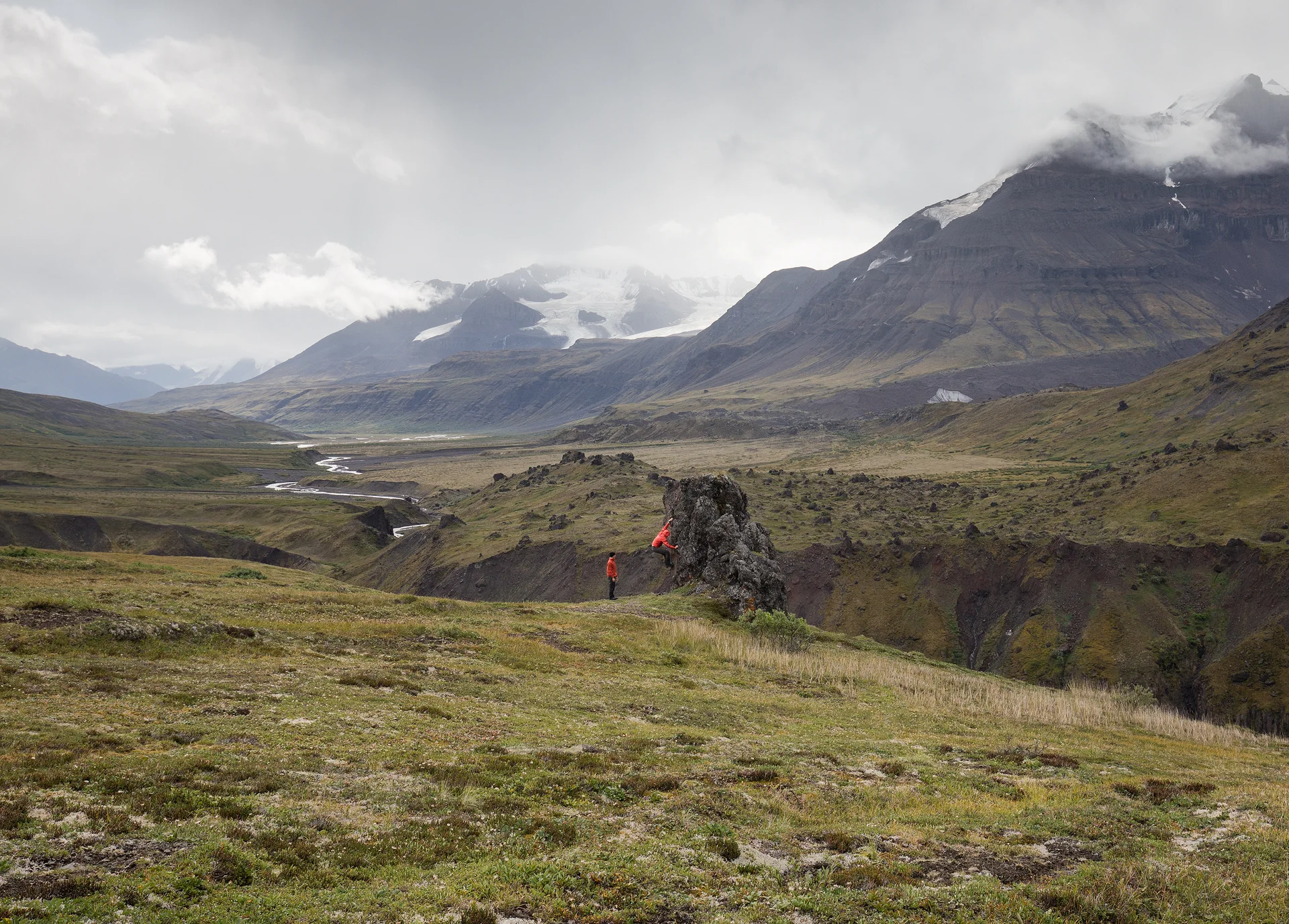Ice, Glaciers, and the Tundra: 8 Days Backpacking in Wrangell-St. Elias National Park
I stared up at the ceiling of my tent and watched as a single water drop fell onto my sleeping bag. I immediately brushed it off but knew more drops were inevitable. It was the sixth day of my eight day trek through the wilderness of Wrangell-St. Elias National Park and Alaska's notorious weather finally caught up to us. It had been pouring for so many hours I had lost count. My tent was durable and doing an adequate job keeping me dry but, as I've learned on multiple occasions, there comes a point when even the best gear can fall victim to Alaska. I hoped that my tent would hold up for just two more days.
- - - - -
At just over 13 million acres Wrangell-St. Elias National Park and Preserve is the US's largest national park. So large, in fact, that it could fit Yellowstone, Yosemite, and Switzerland inside its boundary. If you have ever been to any of those locations you know they take up quite a bit of space by themselves! The park also takes up an impressive amount of vertical space as well. It spans from the ocean all the way to the towering 18,008' Mount St. Elias. It's tough to grasp just how large the park is but taking the mail plane from Anchorage to McCarthy gave me a brief glimpse. Towering mountains stretched towards the sky and the horizon. Their peaks seemed close enough to touch but our pilot informed us those summits were another 7,000' above our tiny bush plane, it seemed impossible to believe but the facts don't lie! I was just having difficulty comprehending the scale of the scene that lay before me.
Channels of dirt and ice, and the occasional glacial pool, were visible for miles from the mail plane.
Last summer I went on a challenging but rewarding trip in Gates of the Arctic National Park and I was immediately hooked on Alaska. My guide told me that if I really wanted to see some Alaskan mountains I should visit the Wrangells. I took her advice to heart and began researching guiding outfitters in the park. It wasn't long until I found St. Elias Alpine Guides. I gave them a call and Gaia talked me through all of the trip options and eventually we settled on the High Pass Odyssey. I was drawn to the hike's diverse terrain as its route would take us from the glaciers all the way up to high mountain passes and the tundra.
Finally, my departure day arrived. I was a little nervous but mostly excited. In the past year I've grown more comfortable in the backcountry and I was feeling much more confident than I did before last year's Alaska trip. I met the guide and my two fellow group members, a mother-son duo from Fairbanks, and we all piled into the tiny bush plane and flew to Nizina Lake.
Watching the plane disappear into the sky and listening to its engine drone slowly give way to an all-encompassing silence was a bit of a sobering moment. There was no more time for preparations, no more time for research, it was just me and three people, who up until the previous night were complete strangers, about to embark on a week-long trip through the wilderness.
Crossing the Frederika Glacier with Frederika Peak in the background.
The dark rock just barely conceals the huge piece of ice underneath it.
Our first day of travel took us slowly over the ever-shifting moraine that abuts the Nizina Glacier. The moraine appeared to be a giant pile of rocks from a distance but up close you can see what it is really comprised of: a thin layer of rock that sits on top of the glacier and streams of meltwater. The melting ice and streams intermittently slough the layer of rocks off and deposit them on another layer of moraine below. This made walking on it extremely difficult because gaining a solid footing was nearly impossible so each step I took I carefully placed my foot down and thought to myself please hold, please hold, please hold. Sometimes it did, sometimes it didn't and before I knew what was happening I found myself on my butt sliding down a pile of rocks, leaving a path of ice behind me. This went on for the entire afternoon.
We finally made it to a nice flat area of moraine and set up camp. Throughout the night I could hear rocks sliding down to new resting places as the ice melted. It was unsettling to sleep on and be surrounded by such unstable ground but it was an experience I was grateful for, nonetheless.
The first night's campsite.
The second, third, and fourth days were filled with glacial travel, in both senses of the word. It was my first time walking on a glacier and I instantly fell in love with them. Each glacier has unique characteristics - crevasses, moulins (pronounced moo-lan like the Disney movie), ridges, pools, rivers, and caves. First, we crossed the Nizina Glacier. Our guide warned us it was going to be the roughest and gnarliest glacier we would encounter on the trip and he was right. It was quite the introduction to walking on glaciers! The Nizina was full of deep crevasses and required careful navigation. Along with crevasses it was dotted with brilliant blue pools and moulins in all shapes and sizes, with diameters ranging from just a few inches across to several feet.
Moulin is French for "windmill" and glacial moulins are formed by the water windmilling on the ice, eventually burrowing a hole through the glacier. Large ones can be extremely dangerous. If you fall in you will immediately be swept under the glacier by the water current and death will be swift and cold. We made sure to give large moulins a wide berth because as much as I was curious to see what sort of labyrinth existed under the glaciers I was not ready to find out.
On the fourth day we crossed the flat and virtually featureless terrain of the Rohn and Frederika glaciers, which were completely different from the Nizina. They reminded me more of a desert and I often forgot that I was walking on ice during the passage.
The second half of our hike took us up to mountain passes and the tundra. After four days of traversing glaciers and navigating rocky, unstable moraine I was ready to hike on solid ground again, even if that meant I would have to bushwhack through some alders. That was a compromise I was willing to make!
Taking a break to climb on some rocks
I knew that rain was inevitable on this trip. I realized that if I was going to head into the Alaskan backcountry for a week or so that meant I would very likely experience a miserable, torrential downpour. The first half of our trip was perfect - sunny skies, relatively warm nights, and sprawling mountain views. That all changed on the fifth day. As we were making our way to camp the cloud ceiling slowly lowered until it was only about 1,000' above us, the temperature plummeted, and just as we were setting up camp the skies opened and I had to scramble to pitch my tent and get everything inside before it was completely soaked. This rain continued all afternoon and all night. Water crept into the seams of my tent and began dripping onto my sleeping bag but luckily, except for those few spots on the seam, the tent kept the relentless rain at bay.
Campsite for the seventh night.
The rain kept us company for two days but on the final day of our trip it finally cleared. This was a huge relief because if the cloud ceiling remained as low as it had been, our pilot may not have been able to fly his plane into the backcountry and we would have been stranded. Thankfully we woke up on the eighth day to clear, sunny skies. We had just enough time before our 1:30pm flight to head up into the Seven Sisters Valley for a quick day hike. The storm that had brought us so much rain brought snow to the mountains just a few thousand feet above us. The fresh snow on the mountains in the valley was stunning. It may have only been mid-August but it already felt like summer was transitioning into fall in the park and our guide informed us that the mountain pass we had crossed a few days earlier was likely covered in snow as well. Summer is a beautiful but very brief season in Alaska.
At 1:30pm we heard a plane buzzing in the distance. It was our pilot, right on time. He picked us up and just like that we were whisked away from the wilderness and plopped back into civilization. It's always a bit of a shock when I re-enter reality after being in the backcountry for an extended period of time. For a week I had conversed solely with three other people and suddenly people were everywhere! My phone instantly began notifying me of emails, texts, and Facebook and Instagram notifications. It was a sensory overload and being able to turn that off is one of my favorite aspects of heading into the backcountry. It's only been a couple weeks since my trip but I'm already thinking about next year's long wilderness trek. I think it will likely be in another Alaskan beauty!















